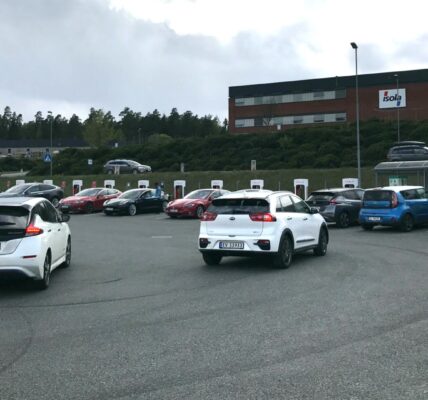The project which includes a covered parking area with a canopy made from photovoltaic (PV) panels, has been designed and built by UK Power Networks Services and will help provide clean energy to the council’s headquarters at County Hall in Morpeth.
The 40-year-old staff car park has undergone major refurbishment work, providing a timely opportunity for the council to upgrade its energy provision so that it is ready for the future.
The investment is part-funded by the England European Regional Development Fund as part of the European Structural and Investment Funds Growth Programme 2014-2020 with match-funding from the council, which it plans to recoup through energy savings.
It is anticipated the new solar energy infrastructure will save between £100,000 and £150,000 on energy costs each year, which can be invested in council services. As well as this, it is estimated over 250 tonnes of carbon emissions will be saved each year assisting the council to meet its target of cutting its own emissions in half by 2025.
The new solar energy infrastructure is one of the largest car port array installations in the UK and features 800kW solar panels, while also providing weather protection for electric vehicles. Additionally, there is a 400kW battery energy storage system with smart controls to optimise energy use, carbon emissions and costs throughout the day.
Energy from the solar panels will be used to power the main building, provide electricity to electric vehicle (EV) charge points for fleet and staff vehicles and also stored to help optimise costs and carbon efficiency.
As well as this, 120 EV charge points have been installed in the staff car park, including 100 fast chargers and 20 rapid chargers including some dedicated for accessible parking bays. This will make it easier for staff with EVs to charge their cars with no reduction in the number of staff parking spaces for combustion engine vehicles. Additional rapid charge and overnight charging options are also now in place for the Council’s fleet vehicles.
The council plans to use this model to test the suitability of installing similar solutions in other public car parks in the county to reduce costs, meet carbon targets and also improve the resilience of energy supplies








